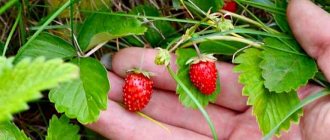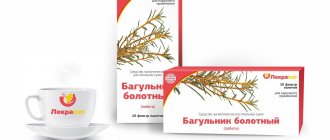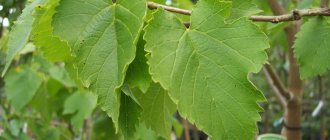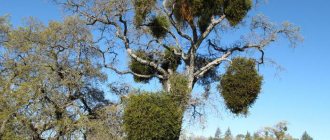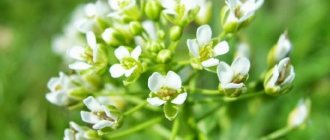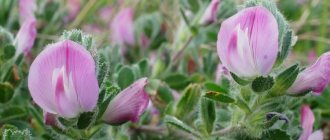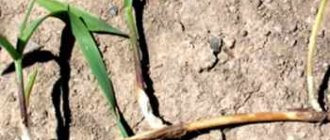What does acacia look like and where does it grow?
Acacia is a genus of plants in the Legume family. Found in Africa, Australia, Mexico, Europe and Asia. It looks like a shrub or tree up to 25 m high. It is a fast-growing tree that is drought-resistant. It is planted for decorative purposes and to create protective forest plantations.
White acacia is mistakenly called another plant - Robinia. It belongs to the genus Robinia and comes from North America. It has been grown in Europe since the 18th century. The tree prefers moist calcareous soils, has a strong root system and grows quickly.
White acacia reaches 20-25 m in height, trunk diameter is 1 m. The shoots are bare or slightly pubescent, the color ranges from olive to red-brown. The crown is openwork, spreading, cylindrical in shape. The root system branches well and goes 12-15 m deep. The crown is strong, gray-brown, with grown vertical cracks.
Robinia leaves are light green, alternate, odd-pinnate, from 10 to 45 cm long. At the base there are thorns 2 cm long, which easily break off. The leaves are elliptical in shape, 4 cm long and 2 cm wide.
In May-July, white acacia produces drooping brushes 10-20 cm long. Each of them contains 5-15 buds. The cup is bell-shaped, 10 mm high, pubescent with short hairs. The corolla is white or cream-colored, 3.5 cm in diameter. At the end of September, the seeds ripen in the beans.
Useful properties of acacia
The buds and bark have beneficial properties. The medicinal properties of acacia seeds have not been fully studied, but the content of toxic substances has been confirmed. Therefore, it is easy to become poisoned with a decoction or infusion of Robinia seeds and harm the digestive system.
Medicinal properties of acacia flowers
- improve blood clotting;
- dilate blood vessels and relieve spasms;
- increase sputum production during colds;
- reduce body temperature;
- increase sweat secretion;
- destroy pathogenic bacteria;
- produce a diuretic effect;
- normalize blood pressure;
- stimulate the secretion of bile;
- reduce stomach acidity.
The properties of acacia wood are used in shipbuilding, for the construction of pillars, fences, bridges and barns. This durable tree is less susceptible to pests and does not swell in water. The texture is rough, but has decorative properties. Robinia is difficult to process, so it is not used for furniture production.
Is acacia good for weight loss?
The benefits of acacia flowers for weight loss have not been proven. To combat excess weight, other products from this plant are used. Robinia honey has a rich composition, removes toxins and waste, cleanses the body, and helps absorb fats. It is added to the diet instead of sugar.
White acacia honey has a high calorie content - 327 kcal per 100 g of product. In order not to harm your figure, it is recommended to eat 1 tbsp. l. honey before eating carbohydrate foods or at night before bed.
Medicinal qualities of “white acacia”
It is known that Robinia preparations can be used as antispasmodics, diuretics, mild laxatives, as well as antipyretic, astringent, hemostatic, choleretic and expectorant. It is known that “white acacia” is used in the treatment of many diseases:
- tumors and inflammation in the “female” genital area; infertility;
- rheumatism, joint diseases;
- depression, overwork;
- ulcers in the stomach;
- colds, including prolonged ones.
Experts admit that the medicinal properties and chemical composition of “white acacia” have not yet been fully studied, so treatment with drugs from this plant is possible only under the supervision of a doctor or an experienced herbalist.
A valuable essential oil is extracted from “white acacia,” which has an antispasmodic, analgesic, antiseptic, stimulating effect, and also repels insect pests. This oil is recommended for use in the care of sensitive skin and in aromatherapy to lift mood and neutralize the effects of stress.
Interesting fact! Blooming acacia is used to make jam and even vodka. You can learn more about this in the video at the end of the article.
Chemical composition of Robinia vulgare
The flowers and young bark of “white acacia” contain unique robinine, a substance that causes a decrease in the level of ammonia in the blood and the removal of urea from the body. This substance is used in pharmacology for the manufacture of drugs. However, this substance is toxic, so self-treatment with “white acacia” is unacceptable!
Flowers, shoots and leaves also contain glycosides, flavonoids, organic and fatty acids, essential oils, tannins, esters (for example, salicylic acid), pectins, phytosterol, mucus, sugars, vitamins A and C, minerals, tannins.
Traditional medicine recipes based on acacia
The beneficial properties of acacia are used in folk medicine. Various parts of the plant are added to infusions and decoctions.
Infusion of acacia flowers
One way to use acacia flowers is to prepare an infusion. The product helps with diseases of the kidneys, genitourinary system, and cystitis.
To prepare the infusion you need:
- fresh or dry buds - 1 tsp;
- boiling water – 1 cup.
The raw materials are placed in a cup and filled with boiling water. Cover the top with a lid or plate. The infusion is left for 2 hours, then filtered through a sieve or cheesecloth. The remedy will be beneficial if you drink 1/3 glass daily before meals.
Alcohol tincture of acacia flowers
An alcohol infusion is prepared from acacia buds. The beneficial properties of white acacia help to get rid of joint pain, radiculitis and rheumatism. 50 g of raw materials are poured with 0.5 liters of alcohol or vodka. The bottle is placed in a dark place and protected from direct sunlight. The contents of the container are shaken periodically.
Rub the finished tincture twice a day. The benefit of the procedure is that pain goes away, inflammation and swelling decrease.
When taken internally, the tincture benefits the nervous system: improves sleep and relieves fatigue. For 750 ml of vodka, 500 g of dry buds are required. The tincture is kept for 3 weeks in a dark place, then filtered. Take 1-2 tsp daily before dinner. tinctures.
Attention! The course of taking alcohol tincture, which does not cause harm to the body, is 1 week.
Acacia inflorescence decoction
For stomatitis and periodontal disease, a decoction is prepared from the buds of Robinia. Its beneficial properties will help relieve inflammation and heal wounds on the mucous membrane. For colds, the decoction has an antipyretic effect and promotes the removal of sputum.
For 1 cup of boiling water add 1 tbsp. l. dried flowers. When the broth has cooled, the raw material is filtered and used as a gargle for sore throat. The benefit of this remedy is to relieve fever during a cold. Without harm to health, take the decoction 1/3 cup three times a day before meals.
For the treatment of gynecological diseases, a useful decoction is taken three times a day, 1 tbsp. l. The course is 1 month. It is recommended to prepare a new decoction every 1-2 days, since its benefits are lost if stored for a long time.
Acacia tea
Robinia inflorescences are added to tea. It is taken for colds, women's diseases, kidney and stomach problems. Also, the medicinal properties of acacia tea are used for prostatitis. In general, the drink benefits the entire body: strengthens the immune system, relieves anxiety and depression, and calms the nervous system.
We recommend reading: Tea with thyme: beneficial properties and contraindications
For 1 glass of boiling water, 1 tbsp is required. l. raw materials. Add honey or sugar to taste. You can also use other herbs to make tea - mint, lemon balm, sage, rose hips.
Tea made from acacia flowers brings benefits to the body and harm if you do not follow the intake rate. It is taken 2-3 times a day, 1 glass. Every 2 months they take a break. Drinking healthy tea is resumed after 2-3 months.
We recommend reading: Mint tea: beneficial properties and contraindications, how to make
Acacia flower juice
Healthy juice is obtained from Robinia inflorescences. In spring, on a dry day, buds that have not yet blossomed are collected. 1 kg of raw materials requires 100 g of sugar. The components are mixed and transferred to an enamel container, compacted well and closed with a lid. Place the container in the refrigerator for 10-14 hours. Then the raw materials are squeezed through gauze or a sieve.
96% alcohol is added to the resulting liquid. For 10 parts of juice, 1 part of alcohol is required. 70% alcohol requires 1.5 times more. The product is placed in the refrigerator for a week. At first the extract is green and quite cloudy, but over time it will turn light brown. A dark sediment may form at the bottom, but the benefits of the extract are not lost.
The beneficial properties of acacia extract are used for kidney diseases. The product relieves pain. The extract is taken three times a day, 1 tsp. half an hour before meals. Pain and other unpleasant symptoms disappear after 20 minutes.
Acacia bark tincture
The bark from the acacia tree also has health benefits. It is added to alcohol tinctures. The resulting remedy helps with stomach ulcers and effectively fights radiculitis, rheumatism and varicose veins.
For 100 g of alcohol or vodka add 1 tbsp. l. crushed bark. The components are mixed and left warm for 2 weeks. Shake the mixture periodically. The finished tincture is filtered. The recommended intake without harm to health is 10 drops an hour before meals, no more than 3 times a day. The general course of treatment is from 2 to 3 weeks.
For maximum benefit, the bark is infused together with burdock root. For 100 g of alcohol, 1 tbsp is required. l. each ingredient. The recommended intake without harm to the body is 1 tbsp. l. an hour before meals. The procedure is repeated twice a day. The course of treatment is 18 days.
Alcohol tincture is useful for radiculitis and rheumatism. First, it is heated to 30 ° C and gently rubbed in a circular motion into the affected area.
Acacia bark decoction
A healthy decoction is obtained from Robinia bark. It is taken for ulcers, gastritis and other gastrointestinal diseases. The decoction is also used to prevent diseases associated with the functioning of the stomach and intestines.
Add 1 tbsp to a glass of boiling water. l. crushed bark. For greatest benefit, also add 2 tbsp. l. burdock and chamomile root. The broth is infused for 24 hours, then the liquid is filtered from solid particles. The resulting product is taken in the amount of 1/3 cup 30 minutes before meals. The treatment period without harm to health is 2 weeks. The procedure is repeated after 2 months.
Recipes for using the medicinal properties of white acacia
Botanical description of white acacia
White acacia is a large tree whose height reaches 15–20 meters. This tree belongs to the legume family, and is very often used in folk treatment for various diseases. White acacia has a beautiful and spreading crown; longitudinal cracks are visible on the tree trunk. The trunk of white acacia is gray-black or gray-brown in color. The shoots and young branches of acacia are green and smooth. Acacia leaves are egg-shaped and arranged oppositely on petioles of 7–21 pieces. The outer side of the leaves is smooth and green, while the inner side is velvety gray-green. White acacia flowers are white, smell pleasant and are collected in clusters that droop.
White acacia blooms from the end of May, and it ripens in June. The fruit of the white acacia is a dark brown flat pod with 4–6 legume-shaped seeds. White acacia was first noticed in North America, and then it was transported to the south of our country. This tree most often grows in parks, gardens and along roads.
Collection and preparation of white acacia
Medicinal raw materials are flowers, fruits, leaves and bark of white acacia. Flowers need to be prepared at the stage of their flowering, and they are collected in a half-bloomed form. Drying should be done in a well-ventilated room where the temperature is 40–50 °C. Bark and foliage should be collected during the growing season.
Medicinal properties and uses of white acacia
In folk medicine, a decoction of white acacia bark is used, this helps people who have worsened gastritis or peptic ulcer disease. Young shoots and leaves are the raw material for preparing a tincture, which is taken during exacerbation of peptic ulcers and gastritis. An infusion and decoction of white acacia flowers is used for kidney disease, bladder disease, and rheumatism. The flowers are used by combining them with the leaves of the common bearberry, the flowers of the common tansy, as well as the flowers of blue cornflower and licorice root.
Chemical composition of white acacia
The chemical composition of white acacia, and especially its fruits, has not yet been fully studied. The bark and flowers of acacia contain the flavonoid robinin. This substance has a hypoazotemic effect - it removes urea from the body. Medicines are made based on robinine. However, this substance is toxic, which means that self-treatment of any disease with the help of acacia is dangerous; in any case, you should consult a doctor.
Flowers and leaves contain various flavonoids, fatty oils, glycosides, essential oils, tannins, pectins and sugars, vitamins and minerals, as well as organic acids.
Recipes for treating white acacia
For uterine fibroids and inflammatory disease of the female genital area, take a decoction prepared from white acacia flowers. To prepare it, take 1 tablespoon of dried flowers and add two glasses of water, bring to a boil and leave for another 2 minutes on low heat until it boils a little. After this, strain the contents, cool and add water to get the same amount as before boiling. This decoction should be taken daily 3-4 times half an hour before meals, 1 tbsp. spoon.
Tincture of white acacia flowers is taken for infertility. To do this, you need to pour 10 grams of flowers (fresh) with 10 grams of alcohol or vodka. We insist on all this for 10 days. This tincture should be taken 3 times a day, but not in pure form, but diluted: 20 drops of tincture should be mixed with one tablespoon of water.
For rheumatism, myositis, joint pain and radiculitis, rubbing is done. To do this, you need to take 2 glasses of vodka, add 50 grams of acacia flowers to them, leave for three weeks in a dark room, but do not forget to shake periodically. When the mixture is infused, strain it - and the liquid for rubbing is ready. Rubbing should be done a couple of times daily.
For coughs and colds or as a means to reduce fever, a decoction of white acacia leaves is used. You need to take one tablespoon of dried leaves, crushed into powder, add 1 cup of boiling water, put on fire and simmer for 5 minutes over low heat. After the broth, you need to cool, strain and take 1 tablespoon 3 times before meals.
Acute and chronic cystitis can be cured by collecting white acacia flowers, wheatgrass root, and calendula flowers. 50 grams of this collection should be poured with 300 milliliters of water, brought to a boil, and boiled for 8 minutes. Next, remove the broth from the heat and leave for 60 minutes, then strain and add more boiling water to the initial volume. You need to drink this decoction daily 3 times before meals, 50 ml.
Contraindications to the use of white acacia
White acacia should be taken in moderate doses because large doses are poisonous. Acacia bark is the most dangerous because it contains toxalbumin robin, a toxic protein substance that can lead to irritation of the mucous membranes.
Acacia should not be taken by people with low stomach acidity. When harvesting wood, the following symptoms of illness may occur: nausea, vomiting, headache, drowsiness.
Horses are very sensitive to alkaloids. When animals are poisoned by acacia, they suffer from abdominal pain. Horses are excited, their limbs are trembling, and their hearts are not working as well as before. In case of poisoning, the first step is to rinse the stomach and give the horse absorbents.
Education: Diploma in General Medicine and Therapy received from the University named after N. I. Pirogov (2005 and 2006). Advanced training at the Department of Herbal Medicine at the Moscow People's Friendship University (2008).
Acacia essential oil in aromatherapy
The essential oil is obtained from Acacia alba and farnese. The product has a dark yellow or brown color, a viscous consistency and a spicy aroma. In aromatherapy, this oil helps relieve nervous tension, improves sleep, restores strength, relieves fatigue and headaches.
Important! Acacia oil is considered a strong aphrodisiac.
To obtain perfume compositions, bergamot, violet, mimosa and ylang-ylang oils are added.
Essential oil is used in cosmetology. It is added to products for cleansing and toning the skin. As a result, turgor improves, wrinkles are smoothed out, complexion improves, peeling and redness go away.
Harm of acacia and contraindications for use
Harm and contraindications of acacia flowers:
- pregnancy and breastfeeding;
- low stomach acidity;
- hypotension;
- individual intolerance.
The harm of Robinia is explained by the content of toxic substances. They cause poisoning if dosages are violated. If the medication causes dizziness, headache, nausea or diarrhea, stop taking it. Children are given acacia for colds, flu and stomatitis. The infusion is used to gargle or orally before meals.
Contraindications for acacia flowers
Incorrect preparation and inappropriate doses can cause side effects. Therefore, when preparing a medicine, you must always adhere to the required standards.
If dizziness, nausea, or diarrhea occur with such syndromes, stop using the medication.
Treatment with acacia flowers is harmful for pregnant and breastfeeding women, as well as for those with individual intolerance.
White acacia bark should not be taken by patients with low stomach acidity.
Despite all the beneficial properties of acacia flowers, we do not forget about contraindications and remember that its use for medicinal purposes should be done with great caution.
Antibacterial and antiviral
25.01.2018
2.1 thousand
1.4 thousand
5 minutes.
Medicines based on white acacia are widely used in folk medicine. The plant contains predominantly beneficial components that have healing properties. Medicines prepared according to folk recipes from these medicinal raw materials have expectorant, laxative, antipyretic and antispasmodic effects. A collection of white acacia can be purchased at a pharmacy or prepared independently.



